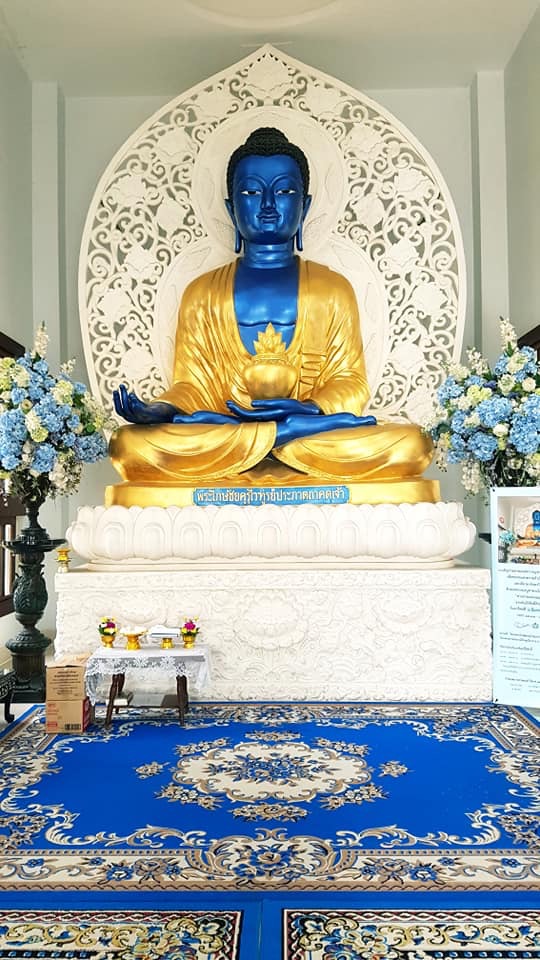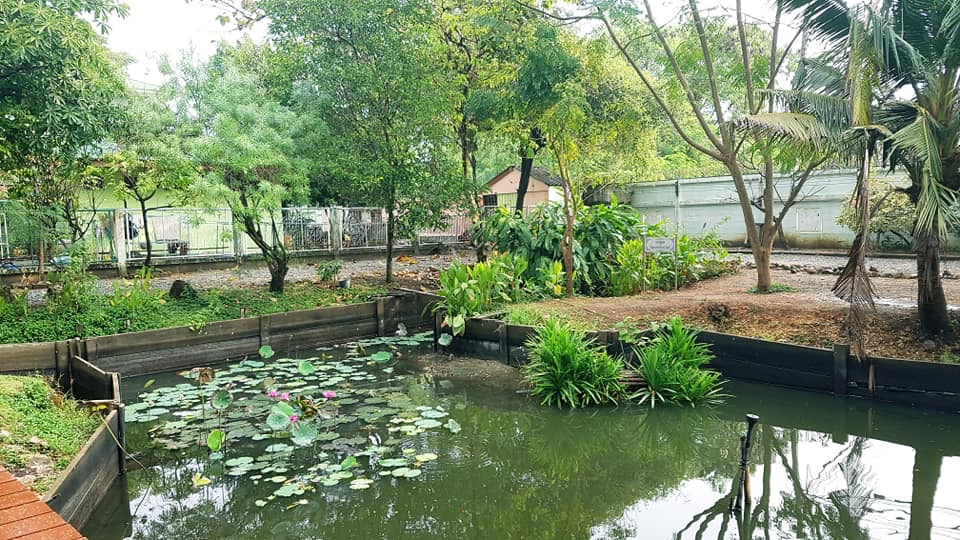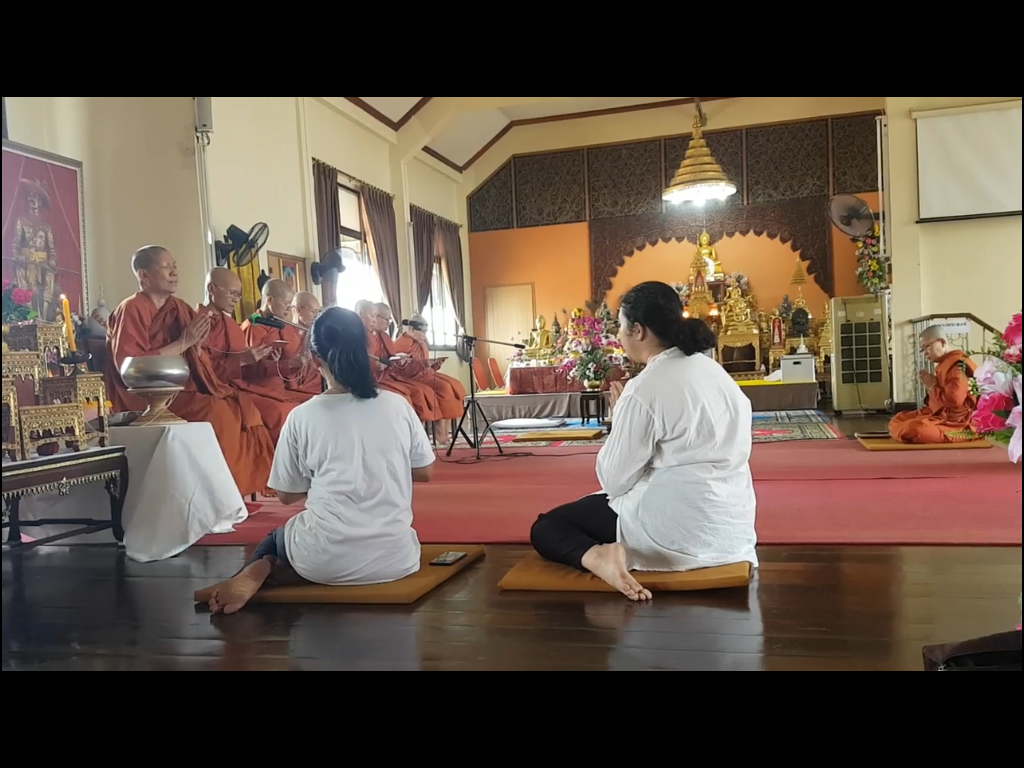Liberating the Dharma for Women – Visiting a Revolutionary Buddhist Monastery in Thailand
Written and photographed by Michael Goonan.
At first glance, Wat Songdhammakalyani is a familiar sight in Thailand. Situated along a busy road about 50 km outside of Bangkok, this Theravada Buddhist monastery is an oasis within the noise and busyness of modern urban life. Home to around 30 monastic novices dressed in traditional saffron robes, the monastery is peppered with various Buddhist shrines and meditation halls, an extensive library of books in various languages, dormitories for monastics and lay visitors, and a serene and quiet courtyard with a koi pond. A dozen dogs roam freely around the grounds, living an idyllic animal’s life. Chanting, meditation, and readings of the Buddhist scriptures are held at 5:30 each morning and 7:00 each evening, and lay people from the community often visit the temple to take part. Other special ceremonies and offerings take place to mark important Thai holy days and in remembrance of ancestors. Many of these ancient traditions predate Buddhism, which has long since embraced them.
Traditional as this scene may seem in Southeast Asia, one thing makes it very different – in fact, revolutionary. The temple is run completely by women, under the direction of their abbess, Ven. Dhammananda Bhikkuni. This would be unremarkable in other countries, including Korea, where female monastics have been part of the fabric of society for centuries. Yet, in Thailand, female monastics, Bhikkunis, are considered to be illegitimate by the religious establishment. The reasoning goes that the lineage of Bhikkunis died out in Thailand sometime in the 10th century, making it impossible for female monastics to receive proper ordination and training. Male monks are forbidden from ordaining female monastics and could face punishment for doing so. For this reason, Dhammananda received her monastic ordination in Sri Lanka in 2003.
Buddhist monastics are so revered in Thai society that even the king bows in their presence. Impersonating a monastic is a crime punishable by several months in prison. Dhammanada and her students are not officially recognized as monastics, so they are technically in violation of this law. However, the Buddhist establishment in Thailand does not interfere with her monastery’s activities in practice. A 2003 profile in the American Buddhist magazine Lion’s Roar speculates, “Perhaps it’s an example of the Thai value of mai pen rai, or ‘never mind,’ where people ignore what they don’t like rather than actively oppose it.” Perhaps.

Though while her work has certainly caused controversy in Thailand, Dhammananda also has many supporters. The Bangkok Post has called her ordination “momentous in the development of Buddhism in Thailand.”
A Thai senator took up the cause in the legislative chamber, recommending that women be allowed to be ordained. Perhaps most telling, however, is the way that the local community supports the monastery.
Unlike other monasteries in Thailand, which receive government assistance, this one runs entirely on the generosity of lay followers. A number of Western Buddhists supportive of Dhammananda’s work have also been among those to provide financial support.
Dhammananda’s mother, Ven. Voramai (known as “Venerable Grandma” to her lay followers), had paved the way for her.
Ordained as a nun in the more liberal Mahayana tradition in Taiwan, she returned to Thailand and started the monastery in the 1950s. For three decades, Dhammananda was a professor of philosophy and religious studies at Thammasat University in Bangkok. She speaks English fluently and did her master’s degree there. According to a profile by the German public broadcaster DW, “She published books on women and Buddhism and even had a television show called “Dharma Talk,” which gained national popularity and won several awards.”
Despite her academic success and following, Dhammananda grew discontented and longed to follow in her mother’s footsteps and be ordained. She chose to do this in Sri Lanka, a fellow Theravada Buddhist country where women’s ordination had been reestablished in 1998 after many centuries. Her work since has been a unique blend of Buddhist traditionalism and modernism, linking traditional Theravada practice with more modern ideals of engaged Buddhism, particularly in relation to women’s liberation.
Four Days Practicing the Dharma at Wat Songdhammakalyani
I was very fortunate to be able to spend four days at the temple in January during a visit to Thailand. Ordinarily, female visitors are allowed to stay overnight at the temple. Since I was traveling with my wife, Emily, I had permission to visit with her, although we had to stay in separate rooms. We have had an interest in Buddhism for many years, leading us to read many books on Buddhist philosophy and practice meditation in our free time. This has included a number of temple stays in Korea, that we have found very enriching. I also visited a female-run monastery in Taiwan as part of a 2012 university travel course on Chinese philosophy.
These have all been quite enriching experiences; however, all have fallen under the Mahayana tradition in Buddhism. Therefore, my visit to Wat Songdhammakalyani was my first exposure to Theravada Buddhism in practice. Theravada, also known as “tradition of the elders”, predates Mahayana Buddhism by several centuries and is often more conservative in its practices. For example, monastics at Wat Songdhammakalyani observe the traditional precept of not eating after noon. In contrast, Mahayana monks in Korea do eat dinner, but they follow other dietary restrictions that Thai monks do not, namely, avoiding “strong herbs” such as garlic and onions.

While chanting is often done in the local vernacular in Mahayana Buddhist countries, including Korea, the chanting at Wat Songdhammakalyani is done in Pali, the ancient Indian language of many of the Buddhist scriptures. A Western analogy could be traditional Catholic mass held in Latin. My attempts at chanting in this difficult-to-pronounce language provided Emily with a lot of entertainment.
All of this was surprisingly accessible, however. While the monks do not eat after noon, visitors are served a delicious Thai vegetarian dinner unless they decline. Full English translations of the chanting were provided to us, and we were also lucky to have the help of Ven. Dhammaparipunna, a monastic who speaks very good English. She sat behind us during readings of the Buddhist scriptures in Thai and translated them into English for us.
During our first day at the monastery, we helped with what is one of the most meticulous recycling programs I have ever seen. As part of their practice of engaged Buddhism, the monks meticulously clean and sort all of their waste to ensure it has the best chance of being recycled. This apparently amounts to an hour or two of work each day, with the goal of leaving not a speck of dirt on any plastic bottle or allowing any compostable food to go to waste.
While early-morning and evening chanting and meditation were regular parts of our schedule, we also had a great deal of free time to devote to our personal sitting and walking meditation practice and study. The monastery had a stunningly extensive English library. In addition to books on Buddhism were books on other religions, science, philosophy, psychology and much more. We even got the chance to feed the fish in the koi pond!

Our visit to the monastery was a peaceful and enjoyable experience. If you are near Bangkok and you are a woman (or are lucky enough to be married to one), I highly recommend visiting. You will surely be inspired by the experience. More information on how to arrange a visit, either overnight or simply during the day, can be found at www.thaibhikkhunis.com
THE AUTHOR
Michael Goonan teaches English at Baeksu Elementary School in Yeonggwang. Originally from Scranton, Pennsylvania, he has also lived in the Czech Republic, New Zealand, Australia, and the Netherlands. He blogs about travel, culture, politics, and more at Goonan.us







